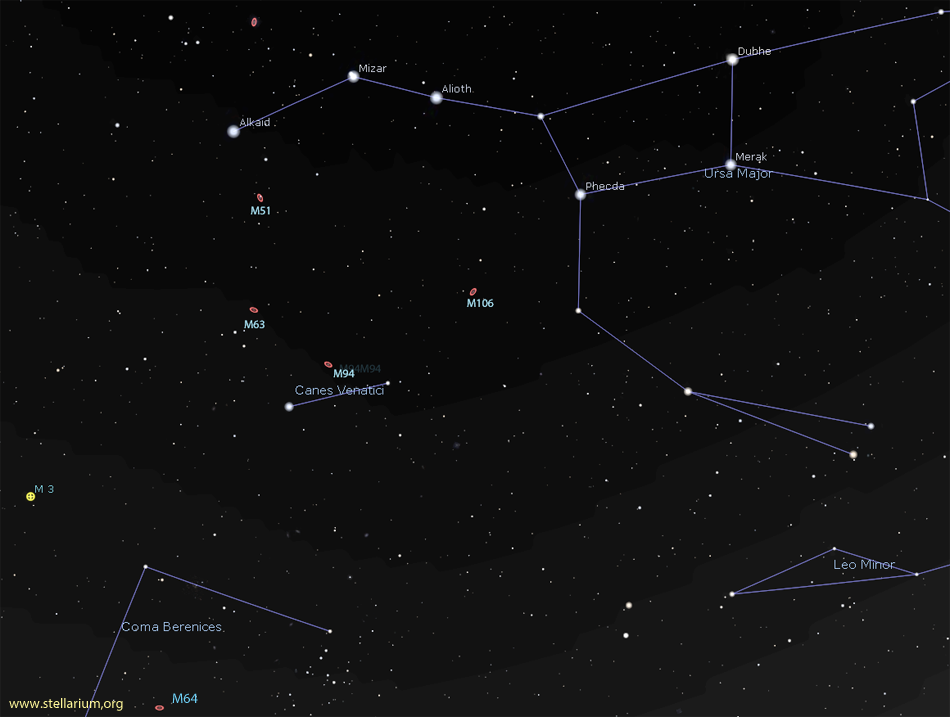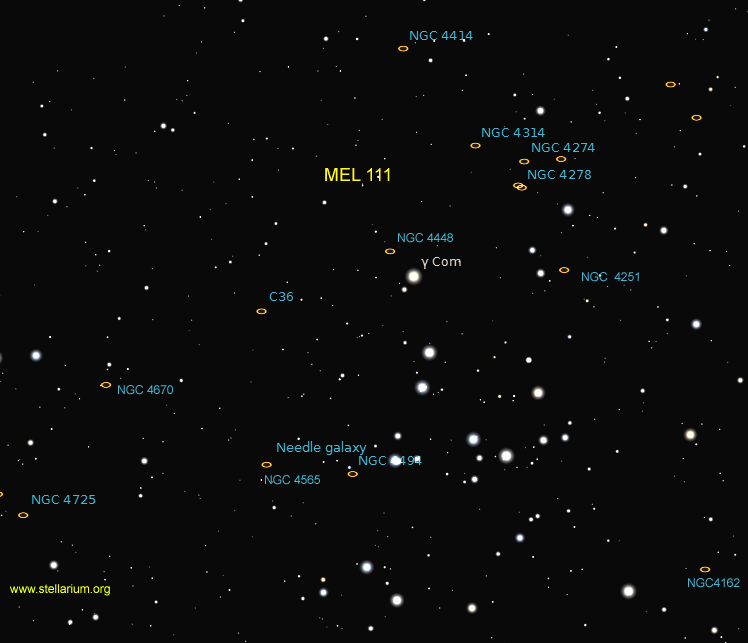A String of Galaxies
Before the three-quarter mark of 1923, astronomers knew our Milky Way Galaxy as being unique. Edwin Hubble changed all that with a historic image taken on Oct 6, 1923. He exposed a photographic plate at a hazy patch of light with the 100 inch Hooker telescope; the largest telescope in the world at the time. The results shocked the astronomical community. A newly discovered Cepheid variable observed within that patch of light led to the conclusion the variable was located in a separate galaxy other than the Milky Way.
An international team of astronomers using images from the Hubble Space Telescope has revised the number to at least two trillion galaxies in the known universe, a tenfold jump from older estimates. The Andromeda Galaxy is estimated to be 2.25 million light-years away and is a favourite target at summer and fall star parties. From a dark site, you can see this remote object with the naked eye. Although Andromeda is still lost in early morning twilight for another few weeks, many other targets are at your disposal.

Starting from the constellation Ursa Major, many Messier galaxies line a pathway all the way down to the Virgo cluster consisting of dozens of galaxies. For example, we find M106 located in Canes Venatici. This intermediate spiral galaxy is located 25 million light-years away and lists as magnitude 8.4 and measures 19 by 8 arc minutes. The brightest galaxy of this constellation is M94 which is a slightly elongated, tightly wound galaxy with a very bright core. This 14 million light-year object has a face-on orientation and glows at magnitude 8.2. This is a definite stop on your galactic survey. Detailed images show active star-forming regions (in red) dotted along the outer edges of the galaxy like a string of pearls.
Move your scope less than five degrees to the west to swoop upon M63. Just a tad fainter then its Messier neighbour, the magnitude 8.6 also known as the Sunflower Galaxy has an estimated distance of 37 million light-years and measures 10 by 6 arc minutes, keeping in mind the moon is 30 arc minutes wide.

Lower your telescope to the constellation Coma Berenices until you come across an inverted letter “Y”, more commonly known as Mel 111. Now that you are here, you must find and enjoy the edge-on beauty of NGC 4565 AKA the Needle Galaxy. Pretty well any instrument will reveal its sharp dust lane made up of dark interstellar clouds and star soot that obscures light. Take your time on this 31 million ly gem. Toward the upper boundary of this constellation is a pretty pair of 10th magnitude galaxies.
Not one but two comets are now visible. First is C/2017 E4 (Lovejoy) found low in the eastern sky before dawn in the constellation Pegasus. Lovejoy seems to have gone through a recent outburst and is presently magnitude 7.1 thus exceeding its predicted peak of magnitude 9 by mid-April. It is an easy find in 50mm binoculars. Comet 41P/Tuttle-Giacobini is presently a circumpolar object at around 7th magnitude as well. Both comets do not sport a tail but show a distinctive green colour.
April 22/23 will be the peak of the Lyrid meteor shower. On that night/morning Earth will be passing through for debris field from Comet Thatcher. This is a long period comet as one lap around the Sun takes 415 years with its last visit in 1861. By midnight the radiant should be high enough to see the predicted 10 to 20 meteors per hour. With at said, outbursts of 100 meteors per hour have been observed in 1922, 1945 and 1982. With a thin waning 13% illuminated crescent rising at 5 a.m. local along with Venus, skies will stay dark.
Jupiter will be at opposition on April 7 meaning it rises as the Sun sets and be the shortest distance from Earth. The Full Pink Moon occurs on April 11. This month’s moon also goes by the Sprouting Grass Moon, the Egg Moon, and the Fish Moon. New Moon occurs on the 26 (lunation 1167).
Until next month, clear skies everyone.
Twitter: @astroeducator
